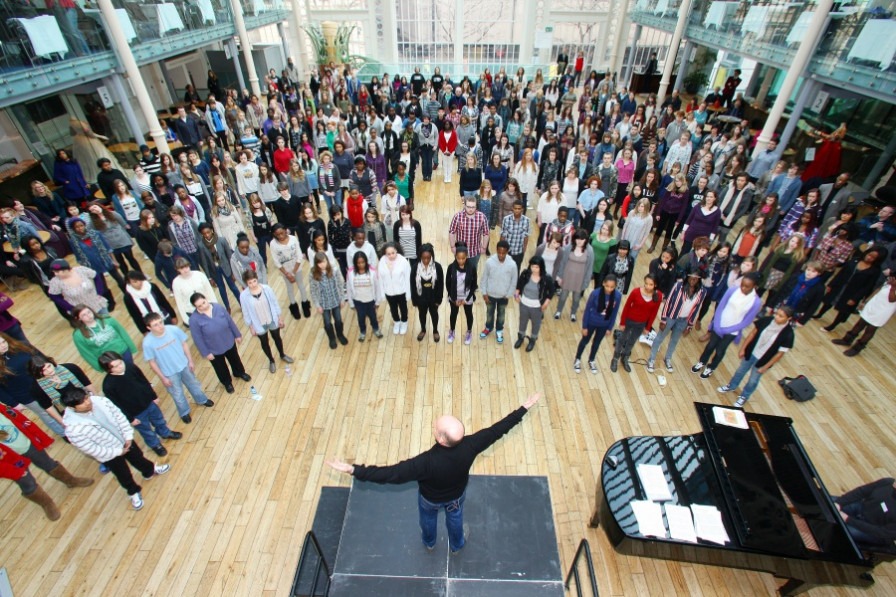Excellence through Group Singing: Learning Process - Musical

Approaches to the musical learning process.
Finding your voice
Many young people involved described how Youth Music Voices had “positively affected their own vocal ability”.
Allowing time to reflect on personal performances as well as how the whole group is developing makes room for individuals to understand their own musical achievements and contribution.
Score reading
While reading a score was not a requirement to be part of the Youth Music Voices project, the vocal leaders did not shy away from encouraging the young singers to develop their music reading skills by following the geography of the music after an aural introduction.
As well as using scores alongside teaching by rote, you may want to programme in specific sessions to develop young people’s notation and notation reading skills.
Leadership & Conducting
To support peer learning and leadership, in some whole choir rehearsals, the Youth Music Voices vocal leaders left the choir alone for a number of minutes with a clear brief.
An observer describes the results:
“The young people reorganise their seating arrangements and take ownership of their space. They ‘scramble’ the sectional seating that divided voices and experiment with sitting next to different voice parts arranged in a horseshoe shape. A tenor seated next to a soprano starts to blend his voice more effectively... Singing has taken over from the spoken voice. They work through the music… Later, as they perform the work they are led simply and intuitively by a soprano. They breathe as one. The result is beautiful.”
You may want to allow the young singers time without direct instruction from the vocal leaders so as to explore the arrangements and develop their interpretations of the pieces.
It might also benefit the young people for vocal leaders to verbalise the process of conducting, allowing young people access to their thought processes and thus be able to draw on these if taking on conducting themselves.
